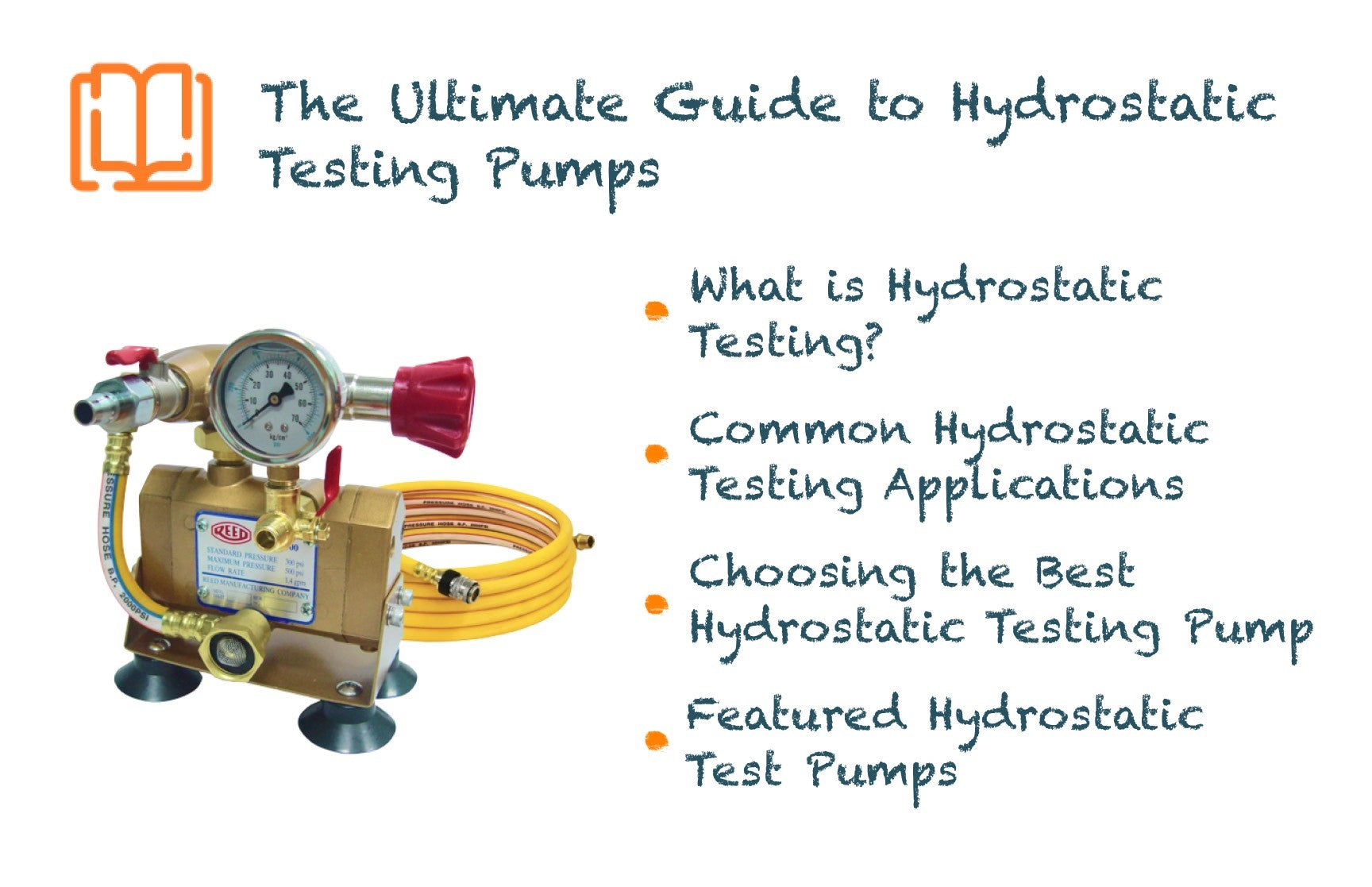What is Hydrostatic Testing?
Hydrostatic testing is a critical process for ensuring the integrity and safety of equipment subjected to high pressure, such as fire hoses, sprinkler systems, and pipelines. The effectiveness of a hydrostatic test largely depends on the reliability and performance of the pump used. In this article, we’ll delve into how hydrostatic testing works, common applications, and the key factors to consider when choosing the best hydrostatic testing pump. We’ll also introduce the top hydrostatic test pumps from our featured brands, Triple R and Reed, to help you make an informed decision.
What is Hydrostatic Testing?
Hydrostatic testing, or hydro testing, involves filling a pressure vessel or pipe system with fluid, typically water, to a specified PSI to ensure it can safely hold the pressure and maintain structural integrity. The system must maintain this pressure for a designated period without leaking or rupturing. The specific PSI and duration of the test are usually determined by the manufacturer or regulatory standards.
Common Hydrostatic Testing Applications
- Sprinkler Systems: These systems must be tested periodically to ensure they maintain pressure and function correctly, typically requiring a pressure of 250 PSI for at least 15 minutes.
- Fire Hoses: Fire hoses are tested to at least 300 PSI to prevent ruptures during use, following NFPA specifications.
- Pipe Manufacturers: Pipes, especially those used in critical applications, are tested to ensure they meet safety standards.
- Cooling Systems: Cylinders or coils in A/C or refrigeration units, and industrial electrical enclosures are routinely tested to ensure operational reliability.
- Miscellaneous: Hydrostatic testing is also used in oil and gas pipelines, irrigation systems, boilers, sewer lines, and more.
Choosing the Best Hydrostatic Testing Pump
When selecting a hydrostatic testing pump, consider the following factors:
- Pressure and Flow Requirements: Ensure the pump can achieve the required PSI for your application and has a suitable flow rate to fill the system efficiently.
- Consistency and Reliability: The pump should maintain consistent pressure without fluctuations to ensure accurate testing results.
- Portability and Ease of Use: A compact and portable pump that is easy to maneuver and set up is ideal, especially for fieldwork.
- Durability: Look for pumps with robust construction to withstand regular use in demanding environments.
- Adjustability: A pressure regulator is essential for adjusting the pump’s pressure to meet different testing needs.
Featured Hydrostatic Test Pumps
Triple R HT-89A Hydrostatic Test Pump
Key Features:
- Compact and Lightweight: Easy to transport and handle.
- High Efficiency: Delivers 3 GPM at up to 300 PSI, 20% more efficient than comparable models.
- Built-in Pressure Regulator: Ensures precise pressure control.
- Quick-Disconnect Hose: Includes a 10-foot hose with an exclusive one-way valve for easy detachment.
- Safety Features: Hose filter, full-flow bypass system, and electrical switch for operator safety.
Specifications:
- Max Pressure: 300 PSI
- Open Flow: 3.0 GPM
- Weight: 35 lbs
- Dimensions: 12" x 10" x 12"
Triple R HT454 Hydrostatic Test Pump
Key Features:
- High Performance: Delivers up to 4.5 GPM and 400 PSI.
- Portable Design: Weighs only 34 pounds with a heavy-duty metal case.
- Precision Gauge: Liquid-filled 600 PSI pressure gauge for accurate readings.
- Complete Kit: Includes a 5-foot supply hose with filter and a 10-foot discharge hose with quick disconnect.
Specifications:
- Max Pressure: 400 PSI
- Open Flow: 4.5 GPM
- Weight: 34 lbs
- Dimensions: 12" x 12" x 8"
Reed EHTP500C Electric Hydrostatic Test Pump with Cage
Key Features:
- Efficient Pressure Testing: Adjustable output pressure with a built-in gauge.
- Automatic Recirculation: Built-in bypass for water recirculation once set pressure is achieved.
- Robust Construction: Stainless steel piston and brass cylinder for durability.
- Portable Setup: 15-foot hose-to-pump connection with quick disconnect and built-in check valve.
Specifications:
- Max Pressure: 500 PSI
- Flow Rate: 2 gal/min
- Weight: 48 lbs
Reed DPHTP500 Hydrostatic Test Pump
Key Features:
- Lightweight and Portable: Uses a cordless drill for power, keeping the pump lightweight.
- Convenient Setup: 15-foot high-pressure hose with quick connect feature.
- Self-Priming: Works with pressurized or non-pressurized water supply.
- Storage Case: Keeps the pump clean and organized.
Specifications:
- Max Pressure: 500 PSI
- Flow Rate: 1.3 gal/min
- Weight: 10 lbs
Our Pumps Provide Reliable Performance and Safety
Selecting the right hydrostatic test pump is essential for ensuring the safety and reliability of your high-pressure systems. Both Triple R and Reed offer high-quality, durable pumps that meet various testing needs. Whether you need a compact, portable pump or a robust, high-capacity model, our range of hydrostatic test pumps will provide reliable performance and peace of mind.
Invest in a hydrostatic test pump that suits your specific requirements and ensures your equipment's integrity and safety. For more information or to purchase a pump, explore our selection and find the perfect solution for your hydrostatic testing needs.
